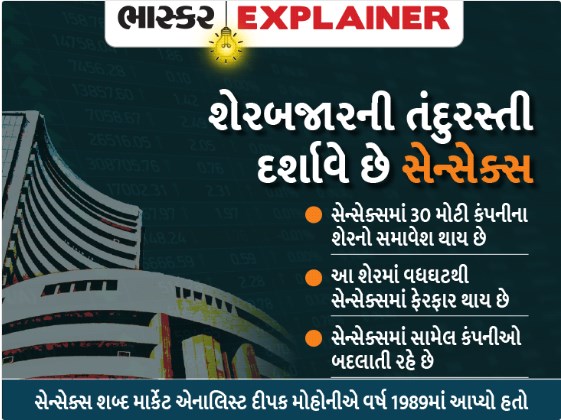How Did The Sensex Start, Who Gave The Name And How Does It Fluctuate? Know All This Information
The past week has been very good for the Bombay Stock Exchange i.e. BSE. The Sensex managed to close above 50,000 for the first time this week and on Friday, the Sensex continued to move higher and closed at 50,732. Earlier, the Sensex touched 50,000 in the US after Joe Bid took office.

However, the Sensex has been declining steadily since then, although it has been steadily rising since the budget came out on February 1. The Sensex has been steadily rising. The Sensex jumped above 40,000 on May 23, 2019. The result of the Lok Sabha election came that day.
Usually you will hear that the market has increased by so many points or so many points today. You often hear and read about the fluctuations in the company's stock. But what is this Sensex? How to invest in it? What is its advantage? How many shares does it have? How do all shares change? How did he get his name What is the gap between Sensex and Nifty? Let's find out ....
What Is Sensex?
The term Sensex was coined by stock market analyst Deepak Mohoni in 1989. It was made by combining two words. Sensitive and index i.e. sensory index (sensory index). In India, the Sensex is the benchmark index of the Indian stock market. It shows the fluctuations in the share price listed on the Bombay Stock Exchange (BSE). It was launched on January 1, 1986

The Sensex store monitors the share prices of listed companies in the market. Returns the average value of a share after a day's trading. It gives us accurate information about the prices of companies listed in the stock market. There are 5,155 companies listed on the BSE, India's oldest stock exchange. All these companies keep an eye on the stock market on the share price.
How Is The Sensex Formed?
There are 5,155 companies listed on the BSE. Of these, shares of 30 large companies make up the Sensex. Shares of this company are included at the time of its calculation. The shares of these 30 big companies are the most bought and sold. These 30 companies are from different sectors and are considered to be the largest companies in their sector. However, the companies involved in the Sensex keep changing.
The company is selected by the index committee of the stock exchange. This committee consists of several types of people. It could include the government, the banking sector and even leading economists.
How Do Sensex Fluctuate?
Fluctuations in the Sensex are quite simple. 30 Company shares fluctuate. If the share price of this company goes up, the Sensex also goes up and goes up. If the share price of this company starts declining, then the Sensex will also start declining. Stock fluctuations reflect the performance of the company.
Understand this in such a way that if a company launches a new project, the company's shares are likely to rise. Investors tend to leave the company if the company goes through trouble. This has a negative effect on the share price, and the Sensex seems to be coming down. The weightage of each company is in the index.
અહીંથી વાંચો સંપુર્ણ ગુજરાતી રીપોર્ટ
What Is The Difference Between Nifty And Sensex?
The Sensex started in 1986, while the Nifty started in 1994. The Sensex is the index of the Bombay Stock Exchange (BSE), and the Nifty is the index of the National Stock Exchange. The Nifty has 50 big companies listed, while the Sensex has 30 big companies. The base value of the Sensex is 100 and the base value of the Nifty is 1000.


No comments:
Post a Comment